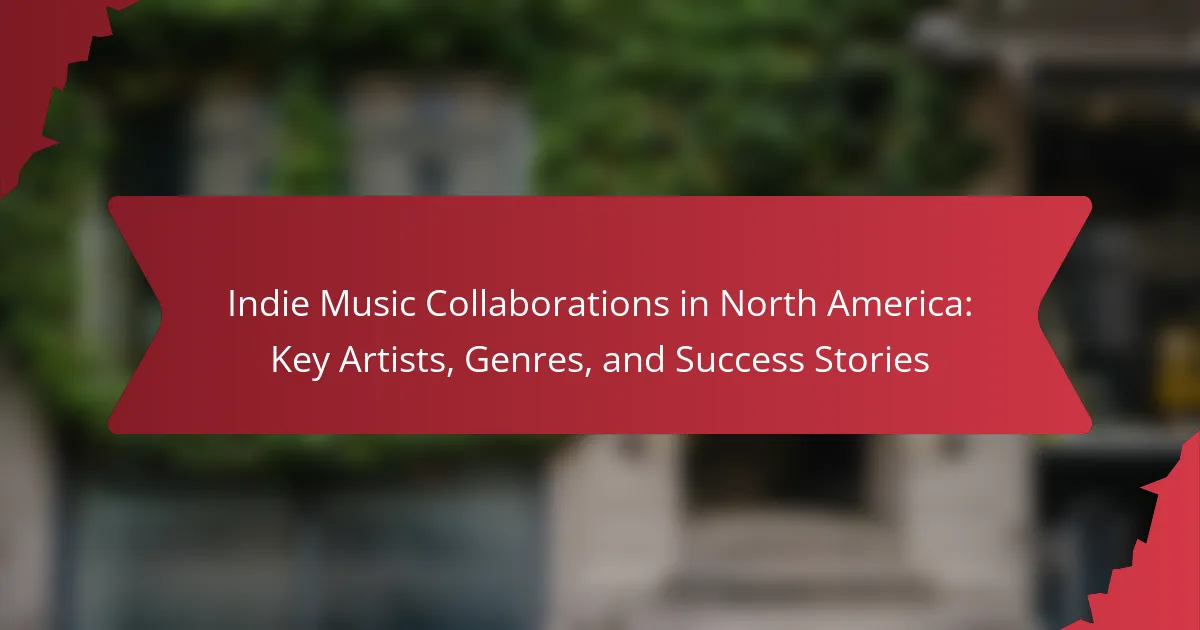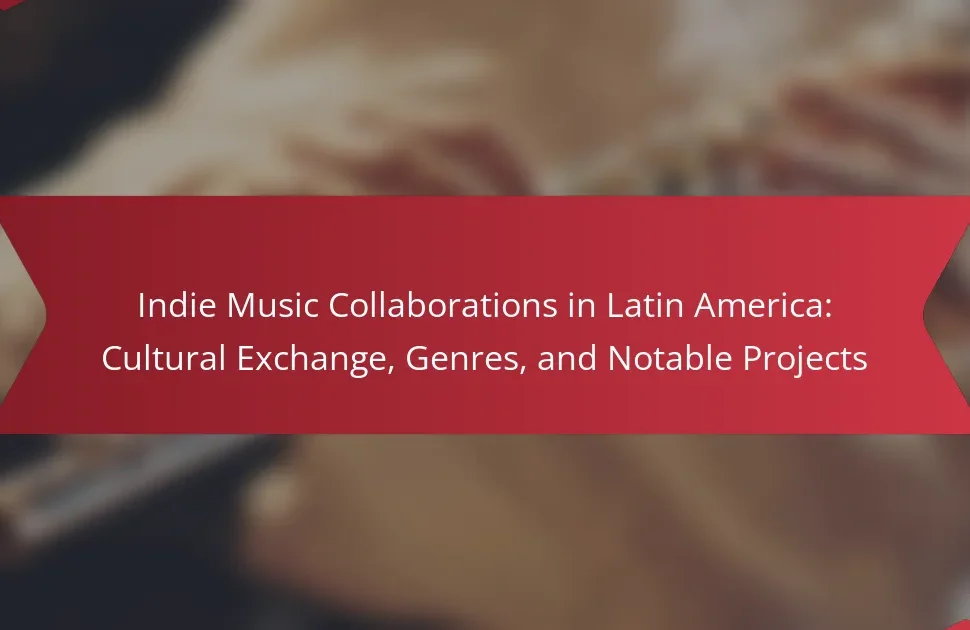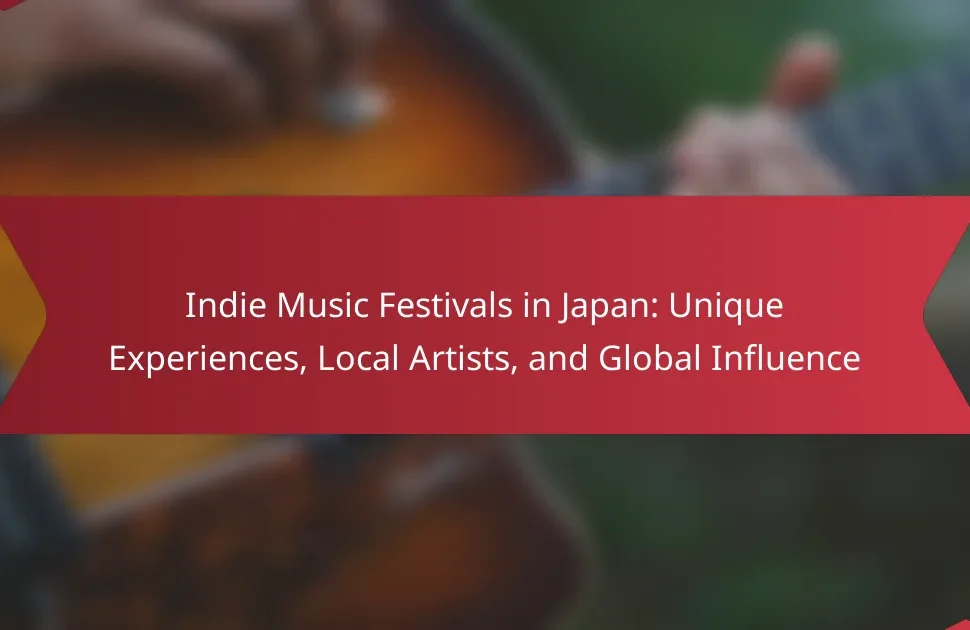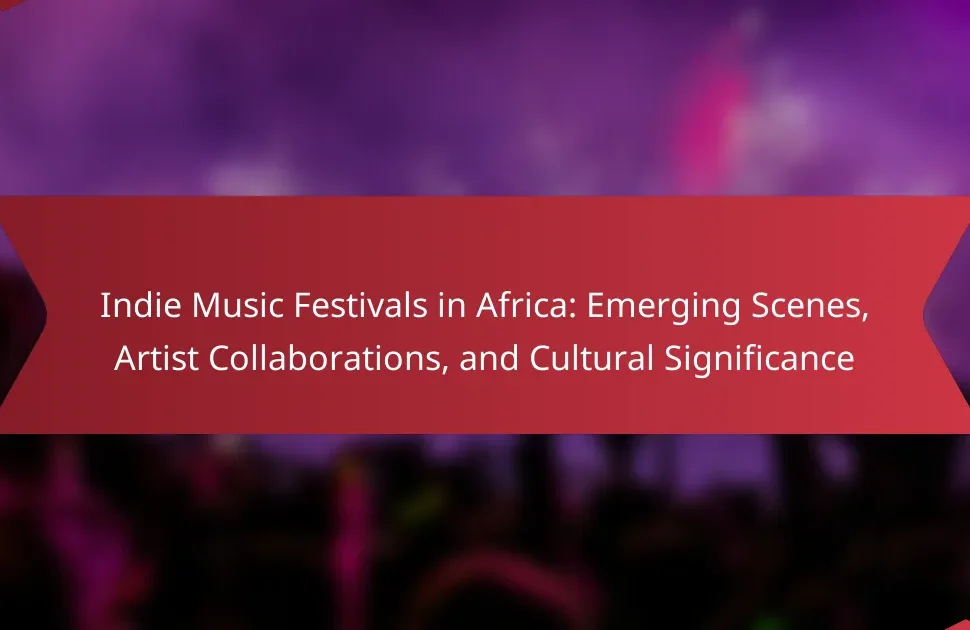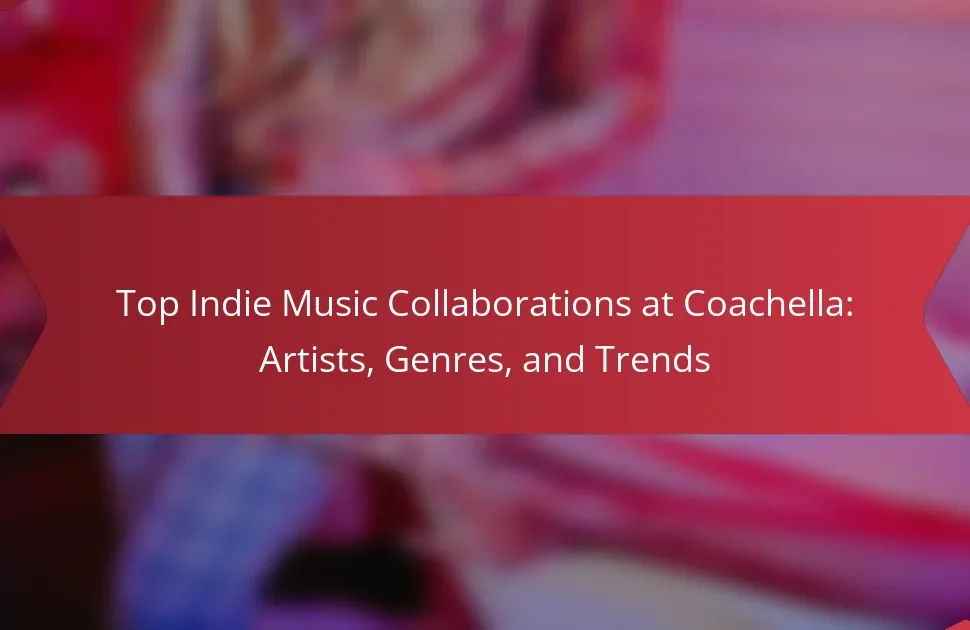Indie music collaborations in North America are reshaping the music landscape by blending diverse genres and fostering artistic freedom. Key artists like Sufjan Stevens, Bon Iver, and Phoebe Bridgers are at the forefront, creating innovative partnerships that resonate with audiences. Success stories highlight the impact of these collaborations, while music festivals and social media platforms enhance exposure and networking opportunities. However, artists also face challenges in communication and artistic alignment, which are crucial for successful collaborations.
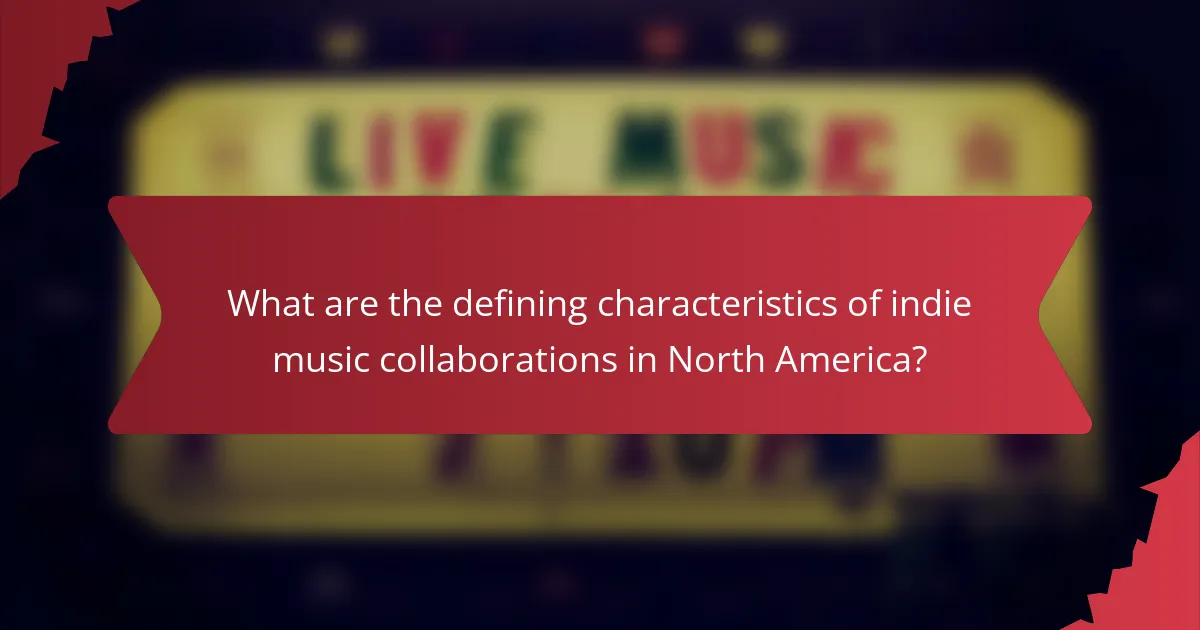
What are the defining characteristics of indie music collaborations in North America?
Indie music collaborations in North America are characterized by diverse genres, innovative partnerships, and a focus on artistic freedom. Key artists often blend styles, creating unique sounds that resonate with audiences. Collaborations frequently involve multiple genres, such as folk, rock, and electronic, reflecting the eclectic nature of indie music. Success stories include projects that have gained critical acclaim and commercial success, showcasing the impact of collaboration in this vibrant music scene.
How do artistic partnerships enhance creativity in the indie music scene?
Artistic partnerships significantly enhance creativity in the indie music scene by fostering collaboration among diverse talents. These collaborations often lead to innovative soundscapes and unique artistic expressions. For instance, artists like Bon Iver and Sufjan Stevens have created groundbreaking music by blending their distinct styles. Such partnerships can also expand an artist’s audience, as seen with collaborations across genres, drawing in fans from various musical backgrounds. Additionally, successful indie collaborations often inspire new trends, pushing the boundaries of conventional music.
Which genres are most commonly represented in indie music collaborations?
Indie music collaborations commonly feature genres such as folk, rock, electronic, hip-hop, and pop. These genres blend diverse influences, enhancing creativity and expanding audiences. Folk and rock are particularly prevalent, often highlighting storytelling and instrumentation. Electronic elements add innovation, while hip-hop brings rhythm and lyrical depth. Pop collaborations frequently attract mainstream attention, bridging gaps between indie and commercial music.
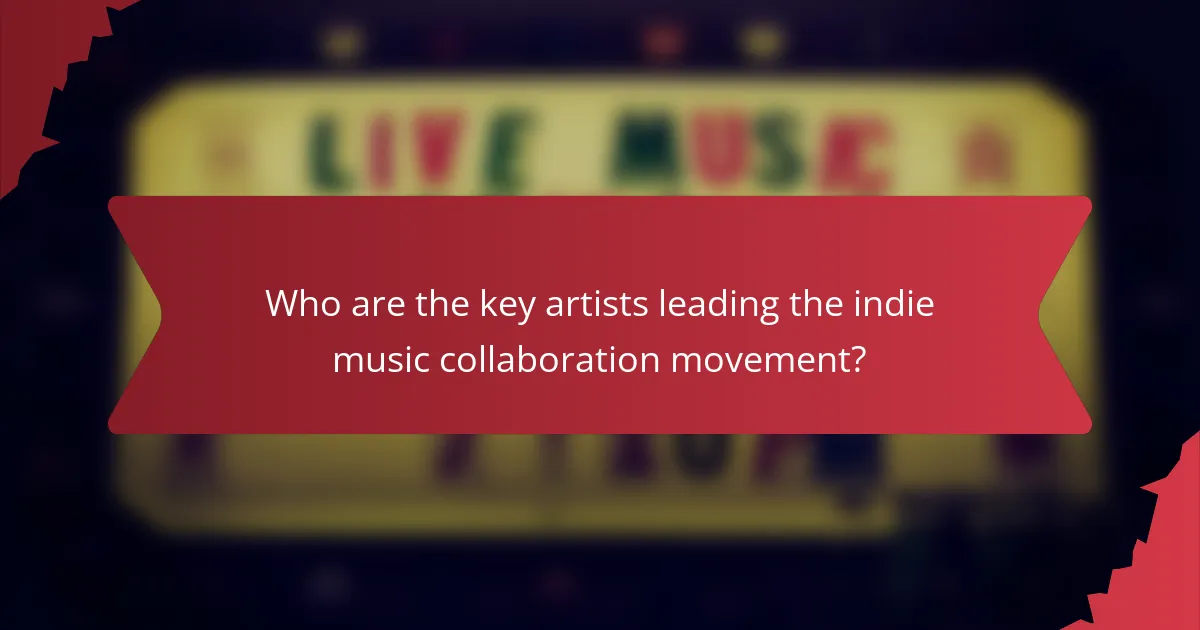
Who are the key artists leading the indie music collaboration movement?
Key artists leading the indie music collaboration movement include Sufjan Stevens, Bon Iver, and Phoebe Bridgers. These musicians frequently collaborate across genres, blending folk, rock, and electronic elements. Sufjan Stevens is known for his genre-defying projects, while Bon Iver’s collaborations often incorporate experimental sounds. Phoebe Bridgers has gained recognition for her partnerships with various artists, enhancing the indie music landscape. Their collective efforts showcase the innovative spirit of the indie music scene in North America.
What notable partnerships have emerged in the past few years?
Notable partnerships in indie music have surged recently, showcasing diverse collaborations. Artists like Phoebe Bridgers and Conor Oberst formed Better Oblivion Community Center, blending their unique styles. Similarly, Sufjan Stevens and Angelo De Augustine released “A Beginner’s Mind,” highlighting their synergy. The collaboration between indie rock bands such as Big Thief and Bon Iver on “Not” exemplifies genre-crossing creativity. Additionally, the partnership of Japanese Breakfast and Mitski at various festivals has attracted significant attention. These collaborations reflect the evolving landscape of indie music in North America, emphasizing innovation and artistic unity.
How do regional influences shape the collaborative efforts of artists?
Regional influences significantly shape the collaborative efforts of artists in North America by fostering unique genres and styles. Diverse cultural backgrounds lead to innovative sound blends, enhancing the indie music scene. For instance, artists from different regions often merge local musical traditions with contemporary influences, creating distinctive collaborations. The success stories of bands like The Lumineers and Fleet Foxes illustrate how regional sounds contribute to broader appeal, attracting diverse audiences. Additionally, music festivals across the continent serve as platforms for collaboration, showcasing regional talent and encouraging cross-genre partnerships.
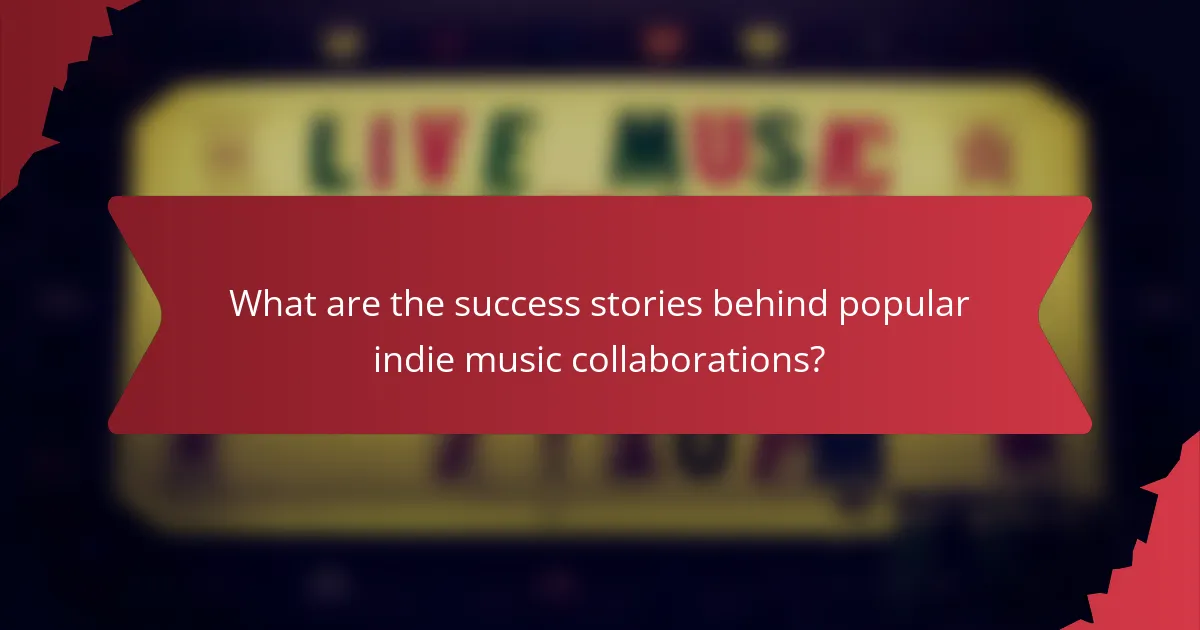
What are the success stories behind popular indie music collaborations?
Indie music collaborations in North America have led to numerous success stories, showcasing unique partnerships across diverse genres. Notable examples include the collaboration between Bon Iver and Kanye West, which blended indie folk with hip-hop, resulting in critical acclaim. Another success is the partnership of Sufjan Stevens and Angelo De Augustine, merging their distinct sounds to create emotionally resonant music. Additionally, the collaboration between Phoebe Bridgers and Conor Oberst in Better Oblivion Community Center highlights the power of indie artists coming together, achieving commercial success and a devoted fanbase. These partnerships often demonstrate the innovative spirit of indie music, pushing genre boundaries and fostering creative expression.
Which collaborations have achieved critical acclaim and commercial success?
Collaborations like Bon Iver and Kanye West, as well as Sufjan Stevens and Angelo De Augustine, have achieved both critical acclaim and commercial success. Bon Iver’s “My Beautiful Dark Twisted Fantasy” received Grammy awards, while Sufjan Stevens’ “A Beginner’s Mind” garnered positive reviews and strong sales. These partnerships highlight the unique blend of indie and mainstream elements, showcasing how diverse genres can resonate with audiences.
How do these success stories influence emerging artists in the industry?
Success stories in indie music inspire emerging artists by showcasing achievable paths to success. These narratives highlight collaboration, resilience, and innovative approaches within diverse genres. For instance, artists like Billie Eilish and Chance the Rapper demonstrate how independent collaborations can lead to mainstream recognition. Such examples encourage new artists to pursue unique sounds and partnerships. As a result, the indie music scene thrives, fostering creativity and community engagement among aspiring musicians.
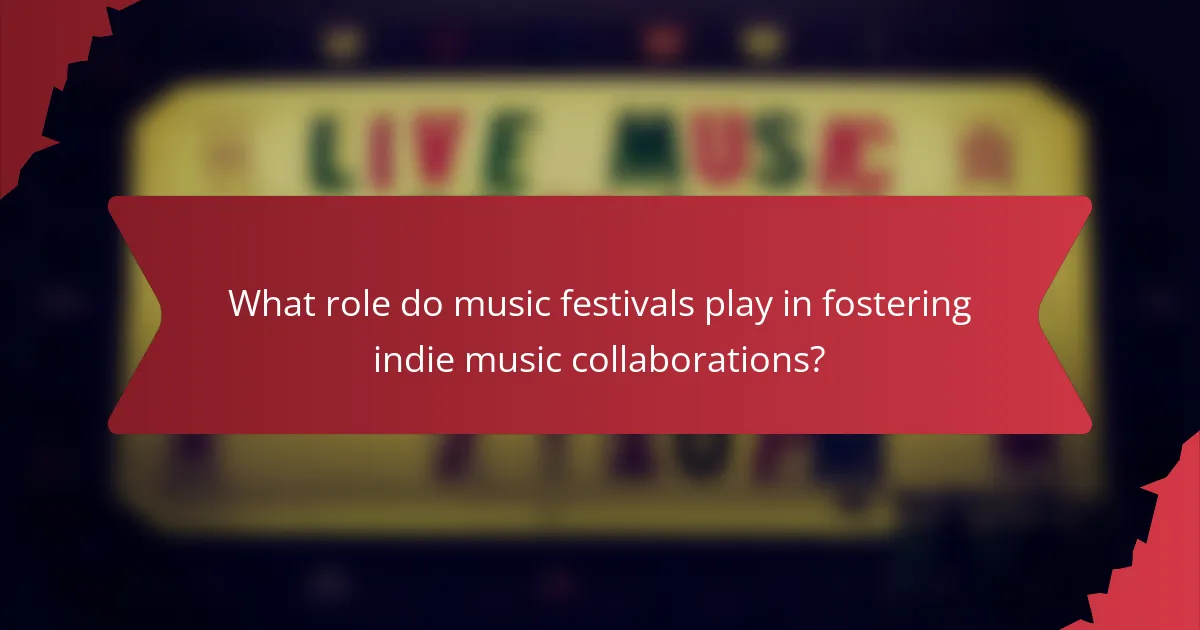
What role do music festivals play in fostering indie music collaborations?
Music festivals significantly enhance indie music collaborations by providing networking opportunities and exposure. These events gather diverse artists, fostering creative partnerships across genres. For instance, festivals like South by Southwest (SXSW) showcase emerging talent, leading to collaborations that often result in successful projects. Additionally, these festivals create a vibrant community, encouraging artists to experiment and innovate together. The unique atmosphere of live performances amplifies these connections, making festivals pivotal in the indie music landscape.
Which festivals are known for promoting collaborative performances?
Festivals known for promoting collaborative performances include South by Southwest (SXSW), Coachella, and Newport Folk Festival. These events encourage artists to collaborate across genres, fostering unique musical experiences. SXSW features numerous showcases where artists team up, while Coachella often has surprise guest appearances. Newport Folk Festival is renowned for its collaborative spirit, highlighting the importance of community in music.
How do festival settings impact the nature of artist collaborations?
Festival settings significantly enhance artist collaborations by fostering creativity and networking opportunities. These environments encourage spontaneous interactions among diverse artists, leading to unique musical fusions. For instance, festivals like Coachella and Bonnaroo often showcase collaborations that blend genres, such as indie rock with electronic music. This atmosphere nurtures experimentation, resulting in innovative tracks that resonate with audiences. Moreover, the shared experience of live performances amplifies the impact of these collaborations, creating memorable moments for both artists and fans.
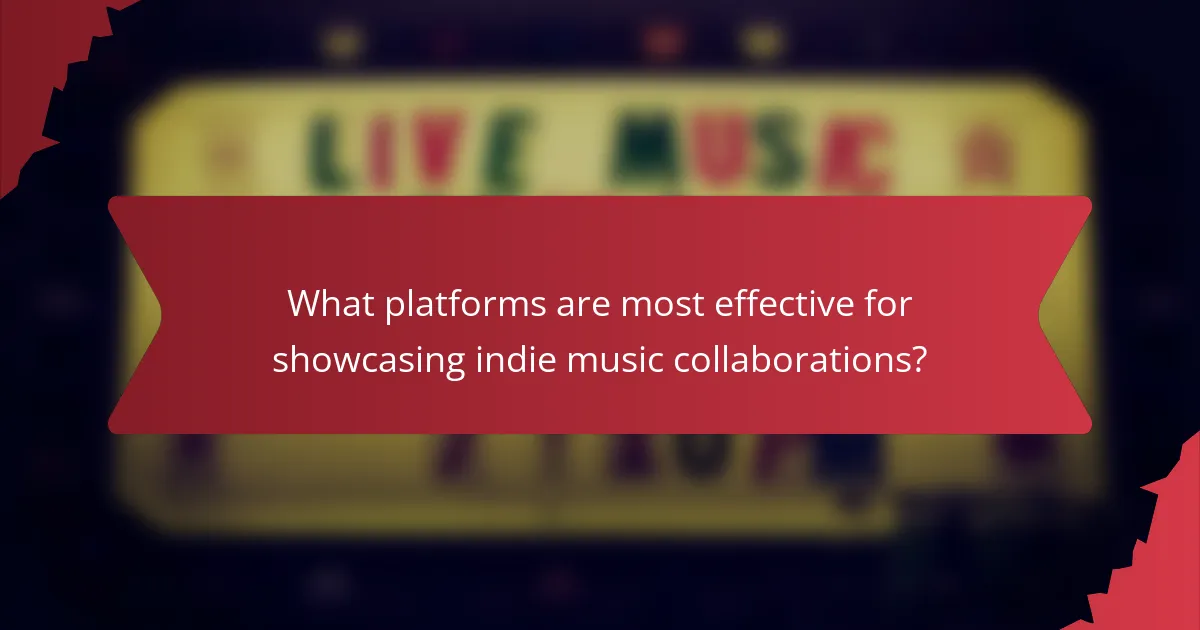
What platforms are most effective for showcasing indie music collaborations?
Social media platforms and music streaming services are most effective for showcasing indie music collaborations. Platforms like Instagram and TikTok allow artists to share creative content and engage with audiences. Spotify and Bandcamp provide spaces for artists to release and promote their music directly to fans. Collaborations often gain traction through these channels, enhancing visibility and reach. Additionally, YouTube serves as a vital platform for music videos and behind-the-scenes content, further engaging listeners.
How do social media and streaming services facilitate artist partnerships?
Social media and streaming services enhance artist partnerships by providing platforms for collaboration and exposure. These digital tools enable indie musicians to connect, share resources, and reach wider audiences. For instance, artists can collaborate on songs via platforms like SoundCloud or Bandcamp, while social media channels promote their joint projects. This synergy fosters creativity and drives success in the indie music scene. Additionally, data shows that artists leveraging social media partnerships see a significant increase in engagement, leading to more successful releases.
Which platforms have the highest engagement for collaborative projects?
Platforms with the highest engagement for collaborative projects include SoundCloud, Bandcamp, and Instagram. These platforms foster community interaction and allow artists to showcase their work effectively. SoundCloud is known for its audio sharing capabilities, Bandcamp emphasizes artist support and sales, while Instagram enhances visual storytelling. Each platform offers unique features that cater to indie music collaborations, promoting connections among artists and audiences.
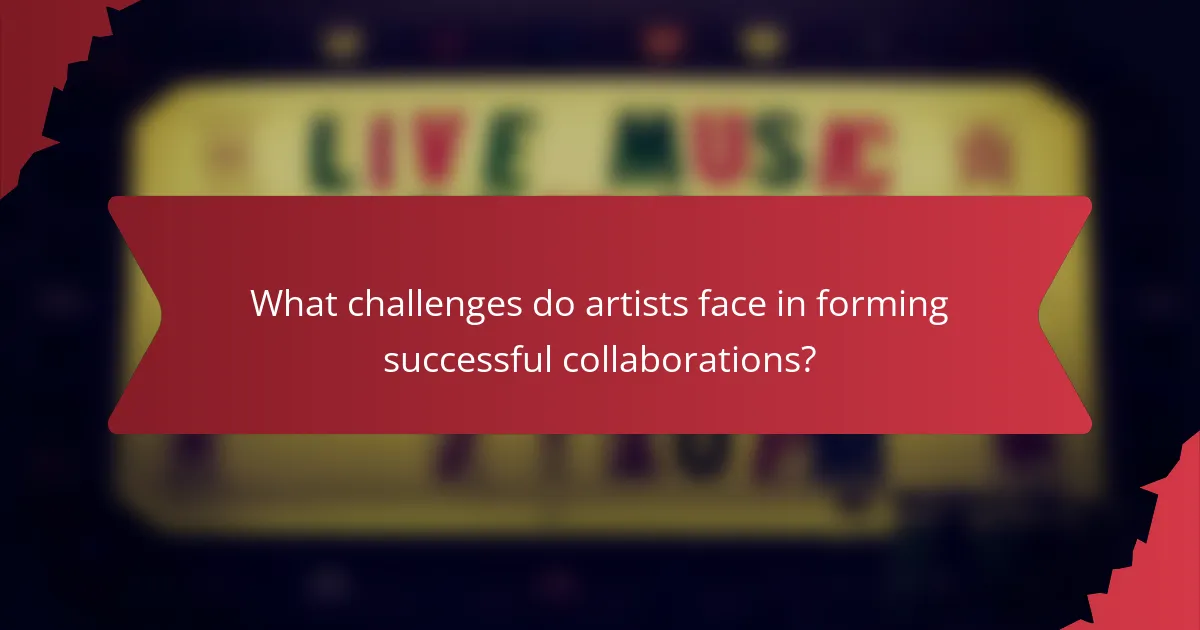
What challenges do artists face in forming successful collaborations?
Artists face several challenges in forming successful collaborations, including communication barriers, differing artistic visions, and logistical issues. These obstacles can hinder creativity and lead to conflicts. Additionally, navigating the indie music landscape often requires balancing personal branding with collaborative efforts. The need for mutual understanding and compromise is essential for fruitful partnerships.
How do differing artistic visions impact collaboration outcomes?
Differing artistic visions can significantly enhance collaboration outcomes by fostering creativity and innovation. When artists from various backgrounds unite, they bring unique perspectives that can lead to groundbreaking music. For instance, collaborations between indie artists across genres like folk, rock, and electronic often result in refreshing soundscapes that appeal to diverse audiences.
Successful examples include the partnership between Bon Iver and Kanye West, merging indie folk with hip-hop elements, creating a unique auditory experience. Such collaborations highlight how contrasting artistic visions can lead to unexpected yet successful results in the indie music scene.
Moreover, the blending of genres not only broadens artistic expression but also expands market reach. Indie artists collaborating with mainstream musicians often achieve greater visibility and commercial success, demonstrating the value of diverse artistic input.
Ultimately, embracing differing artistic visions in collaborations can yield innovative music that resonates with listeners and elevates the indie music landscape in North America.
What logistical issues commonly arise in collaborative projects?
Logistical issues in collaborative projects often include communication breakdowns, scheduling conflicts, and resource allocation challenges. These factors can hinder progress and affect the overall success of indie music collaborations in North America. For instance, artists may struggle to align their schedules for recording sessions, leading to delays. Additionally, miscommunication regarding roles and expectations can create friction among team members. Resource limitations, such as budget constraints or access to equipment, can further complicate these projects. Addressing these issues proactively is crucial for fostering productive collaborations.

How do cultural trends influence the evolution of indie music collaborations?
Cultural trends significantly shape indie music collaborations by fostering innovation and diversity. The rise of digital platforms allows artists to connect across genres and geographies, leading to unique partnerships. For instance, collaborations between folk and electronic artists have emerged, reflecting a blend of traditional and contemporary influences. Additionally, social movements inspire lyrical themes and artistic expressions, enhancing the relevance of indie music in today’s cultural landscape. The impact of streaming services also facilitates the discovery of diverse sounds, encouraging artists to experiment collaboratively.
What emerging themes are shaping collaborative works in 2025?
Indie music collaborations in North America are increasingly shaped by diverse genres, innovative technology, and cross-genre partnerships. Key artists are blending styles, leading to unique soundscapes and broader audience reach. The rise of digital platforms facilitates collaboration, allowing artists from various backgrounds to connect and create. Success stories, such as those involving genre-crossing duos, highlight the potential for artistic growth and commercial success.
How do audience expectations affect the direction of collaborative music?
Audience expectations significantly shape the direction of collaborative music. Artists often adapt their styles and genres to meet listener preferences, leading to innovative blends.
In North America, indie music collaborations thrive on audience feedback. Key artists like Bon Iver and Sufjan Stevens have successfully merged genres, responding to the demand for authenticity and experimentation.
Moreover, the rise of social media platforms allows fans to voice their preferences directly. This interaction influences collaborations, guiding artists toward more diverse and inclusive musical expressions.
As a result, indie music collaborations continue to evolve, reflecting the dynamic relationship between artists and their audiences.
What best practices can artists adopt to maximize collaboration success?
Artists can maximize collaboration success by fostering open communication, establishing clear goals, and being flexible. Building trust is essential for effective teamwork. Engaging in diverse genres enhances creativity and broadens audience reach. Successful collaborations often feature shared resources and mutual promotion, exemplified by artists like Bon Iver and Sufjan Stevens, who blend genres for unique soundscapes.
